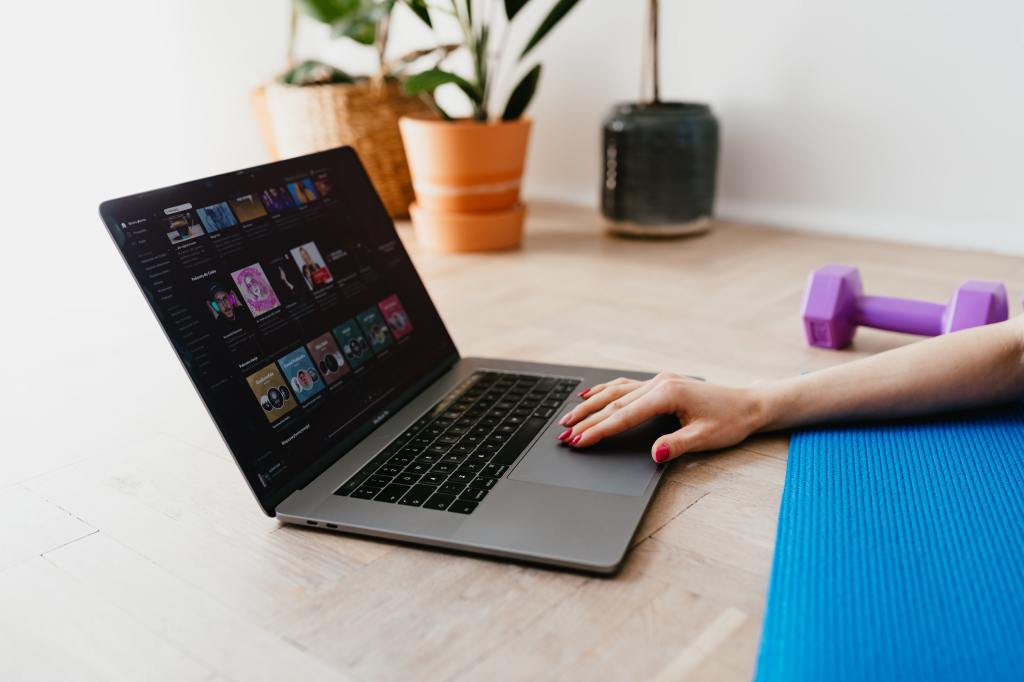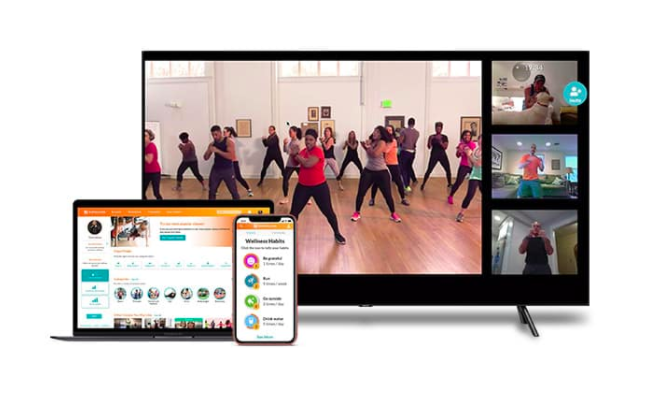via IFTTT
Wall Yin Yoga practice
via IFTTT
Newsletter Alert!
We are MOVING!
I am super grateful to WordPress.com for hosting us since 2015, and for all of the followers and friends who’ve read, shared, liked and interacted with my posts here. Why the change? As my career is shifting (partly due to the current state of affairs, and partly due to my evolution as a health coach and wellness mentor), it’s time to shift the format to one that is better suited to my audience, and my current offerings.
So without further ado, I cordially invite you to join me on Substack: https://laurathehealthcoach.substack.com/p/coming-soon?r=6s0al&utm_campaign=post&utm_medium=email&utm_source=copy
You are always welcome to subscribe for free and get access to blog posts, recommendations, and short-form audio content. There will also be in-depth content as well as full-length videos and podcasts for paid subscribers. I do hope you’ll join us over there–the community os growing already!
In addition to Yoga content (that’s not going away, I promise), there will be more general wellness information and guidance: lifestyle, meditation, stress reduction, workouts, breathing, and nutrition. Now is as good a time as any to get back into self-care; good health changes everything!
Hope to see you on the HIGHWAY to HEALTH! Vroom vroom!
In gratitude,
Laura
(PS this blog will stay up until further notice, so you’ll still have limited access to archives here! Lmk if you have questions!)
5 Things Fitness and Yoga Instructors need to do right now to teach online
I hate to start a post with an apology, although normally I think it’s bad form to do so. However, I’m going to break my own rule and do it anyway, because I feel I owe it to you, dear reader.
I am sorry that I didn’t post this five months ago, when it would’ve been more useful.
Five months ago, (maybe a bit more, by a week or two) the pandemic gained enough steam in the US to cause entire cities to lock down in an effort to control infection. As part of these orders to “stay at home”, be “safer at home” or straight-up quarantine, gyms, fitness centers and yoga studios closed their doors. I recall that, at the time, we all believed it would be for two weeks. I was willing to wager it would be more like a month. Regardless, none of us at that time could have predicted the impact this would have on our livelihoods as yoga and group fitness teachers and trainers. So who knows if my message would have landed then.
Five months in, some places are closing their doors for good, while others reopen–only to have to close again. Our students and clients anxiously seek us out via social media to ask if and when we are teaching online. Many of us took our classes online immediately, in a valiant attempt to maintain a routine not only for ourselves but for our students. We did so “without a net”, not really sure if we should do Zoom classes, Instagram Live, YouTube or Facebook Live. It was an inspiring but confusing time, seeing so many of us experiment with different modalities to see what would work. Almost immediately, companies developed software and systems to help streamline the process and subsequently turn need into profit, as companies do. No complaints here–supply and demand.
Regardless of what works (which is a topic for another article), there are a few things that any online instructor needs to do to make their classes and sessions more effective and impactful for their participants.
Anyway, here it goes: the following is a list of non-negotiables for any online fitness/wellness instructor:
(and I’ll skip the obvious ones, like “clear the clutter behind you!” and “sign up for Zoom” because they’re common-sense and there have been countless posts about those things already)
- Get a tripod. This is a must. Yes, I know how creative we can be, fashioning a makeshift stand out of egg cartons, yoga blocks, soup bowls, etc: but if you want a professional look that is lower risk (we’ve all had the stack of books holding up our iPhone fall down at least once), just break down and get the tripod. I don’t mean a desktop miniature version with bendable arms: I mean a legit tripod that has legs on the floor and an adjustable height. Make sure it is designed expressly for mobile phones. You can get one on Amazon for 25 bucks and it doubles as a selfie stick–how can you lose!
- Get a set of bluetooth headphones. Also a must: I’ve taken a number of online classes in which the instructor used the onboard device mic, and the sound was horrible. Ambient sounds were picked up that interfered with the teacher’s cues, and volume fluctuated when the teacher may have had their face away from the mic in a down dog. If you have AirPods, that should work fine; for Android users, I highly recommend Letscom IPX7 earbuds, which are under 20 bucks and sound better than my AirPods. (Note: as of this writing, only the onboard device mic works with Instagram Live, but I wouldn’t recommend teaching there anyway—more on that in another post)
- Be sure to teach in a well-lit space, and don’t teach in front of a window. Photography 101: have the light toward the subject, not behind them.This doesn’t mean you need a fancy social media influencer ring light (you really, REALLY don’t), but I do recommend that you forego the dim mood-lighting that may have been effective in a studio when we used to be able to practice in-person in lieu of some good, solid illumination. It’s TV, not theater, kids. Listen, if you really want to, use the ring light (just make sure you aren’t wearing glasses–the glare is excruciating. Don’t ask me how I know).
- Make absolutely sure you have a solid internet connection. If it’s at all possible, set up your teaching space as close to the WiFi router as possible. Nothing is more frustrating during an online teaching sesh than having your students tell you that your image is frozen or your sound has disappeared due to a poor signal. Before every class, run an internet speed test: https://www.speedtest.net/ has an app you can download right onto your phone so you can check the connection (be sure you’re connected to Wifi–look for a pizza slice icon at the top of your phone’s screen, or check in the phone settings). Shoot for a minimum of 20mbps download and 2.0mbps upload.
**If you’re using your laptop and laptop camera, I highly recommend skipping WiFi entirely and get an ethernet cable instead to hardwire you to your modem. - Last but not least: if you don’t have a social media account, make one. This is where your students will go to seek you out. Even if you have an account and aren’t active, post that you’re teaching online. Let students know where to find you online and how to sign up for class.
If social media is your thing and you’re very active, clean it up. If it’s been a while since you’ve given your social media channels and overhaul, now’s the ideal opportunity to do so. Comb through your Facebook pages, Instagram accounts, Twitter and YouTube accounts if you have them, and eliminate any posts that are outdated and/or irrelevant. Posts about past events, links to old schedules, references to former places of work, all can be archived. If you use your social media account for personal posts as well as fitness related posts, I strongly recommend starting a new account for the latter. This way anyone who has or obtains your social media handle will only see fresh and updated content. We are living online now, so this is vitally important.
***Bonus tip: I have a webinar online for teachers where I go over some other marketing tips (including why I don’t recommend streaming free classes on Facebook and Instagram). You can sign up for the presale launch here.
What other issues are you facing with getting your teaching business online Let me know int he comments, and I’ll do my best to help! It’s a whole new world, and we’re in this together–let’s see what we can discover, and create opportunities out of challenges.
#onlineteaching #fitness #zoom #yoga #personaltraining #groupfitness

Join me on BurnAlong: an employee wellness app
I’ve recently partnered with BurnAlong to bring yoga and meditation to companies, businesses, schools and organizations. If you are in charge of your company’s wellness program (or have any connection to that department), consider BurnAlong as an easy to use and affordable workplace wellness solution! https://www.burnalong.com/

5 Mistakes Yoga Teachers Make During COVID-19 (repost from Lucas Rockwood)
5 Mistakes Yoga Teachers Make During COVID-19 https://www.linkedin.com/pulse/5-mistakes-yoga-teachers-make-during-covid-19-lucas-rockwood
Podcast recommendation: Yoga is Dead
I was recently introduced to this podcast by a colleague; it’s definitely worth a listen. This episode in particular really resonated with me, but then again, so have all their episodes.
Episode information:
EP 4 – VINYASA KILLED YOGA
“In this episode, we discuss the history and evolution of the vinyasa practice and issues of accessibility, yoga injuries, and a culture of athleticism. We touch on concepts of vinyasa, surya namaskar, tapas, modern postural yoga and the evolution of asana. We discuss certain popular yoga gimmicks and debunk the theory that no yoga is authentic. We share our personal stories and preferred methods for practicing and teaching. We pitch the importance of yoga & community and we wrap the episode with guidelines and tips for practicing vinyasa in an inclusive and accessible way.”
Click for Ep 4 – Vinyasa Killed Yoga Resources:
https://www.yogaisdeadpodcast.com/resources
Yoga is Dead is a revolutionary podcast that explores power, privilege, fair pay, harassment, race, cultural appropriation and capitalism in the yoga and wellness worlds. Join Indian-American hosts Tejal + Jesal as they exposes all the monsters lurking under the yoga mat.
Check us out on social: Podcast Instagram: @yogaisdeadpodcast
Podcast Twitter: @yogaisdeadpod
Jesal’s Instagram: @yogawalla Tejal’s Instagram: @tejalyoga Venmo: @yogaisdeadpodcast
Yang Yin Yoga class
via IFTTT
Posture Clinic–Standing Bow part 1
via IFTTT
26 and 2 Hatha Yoga 7.5.2020
via IFTTT